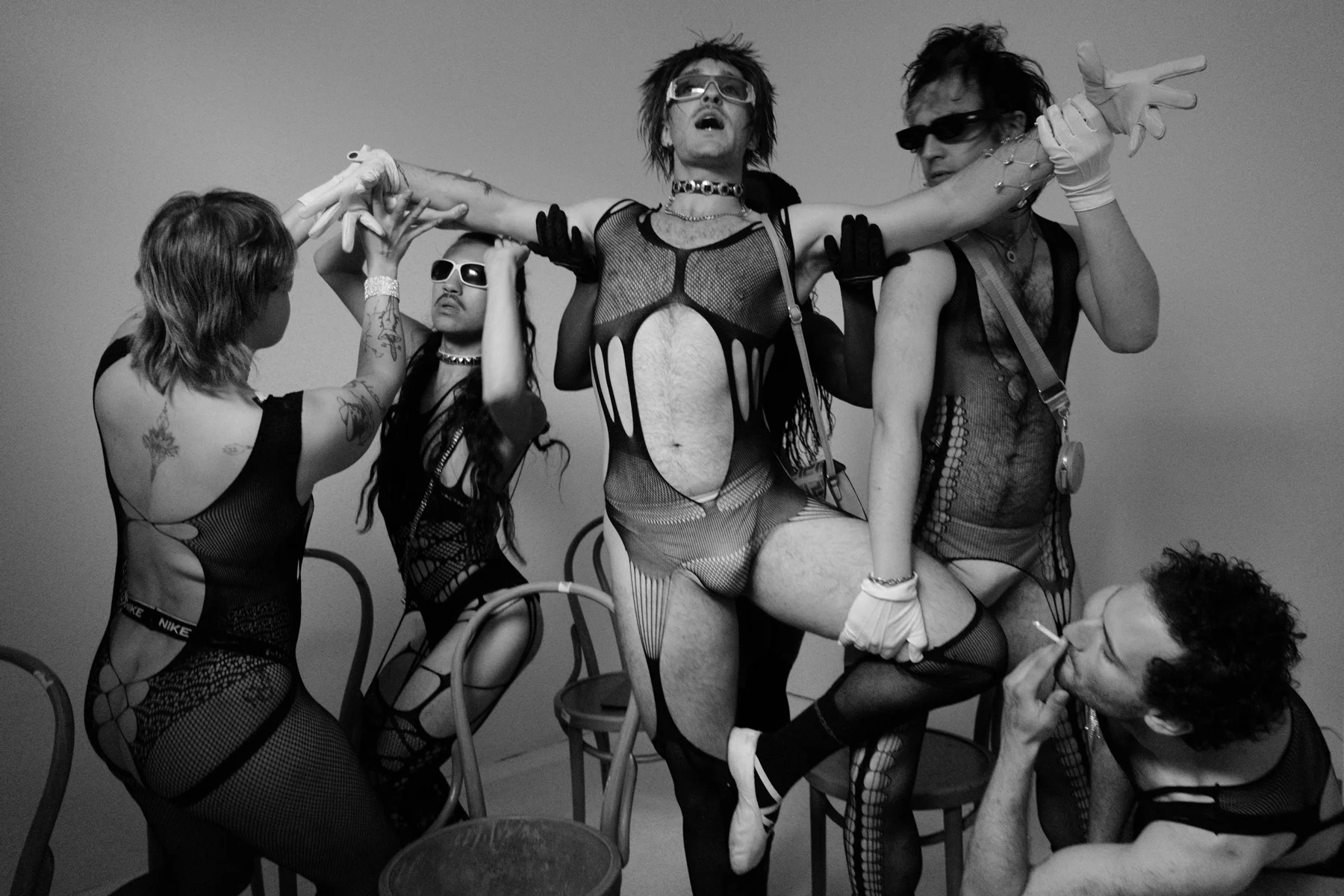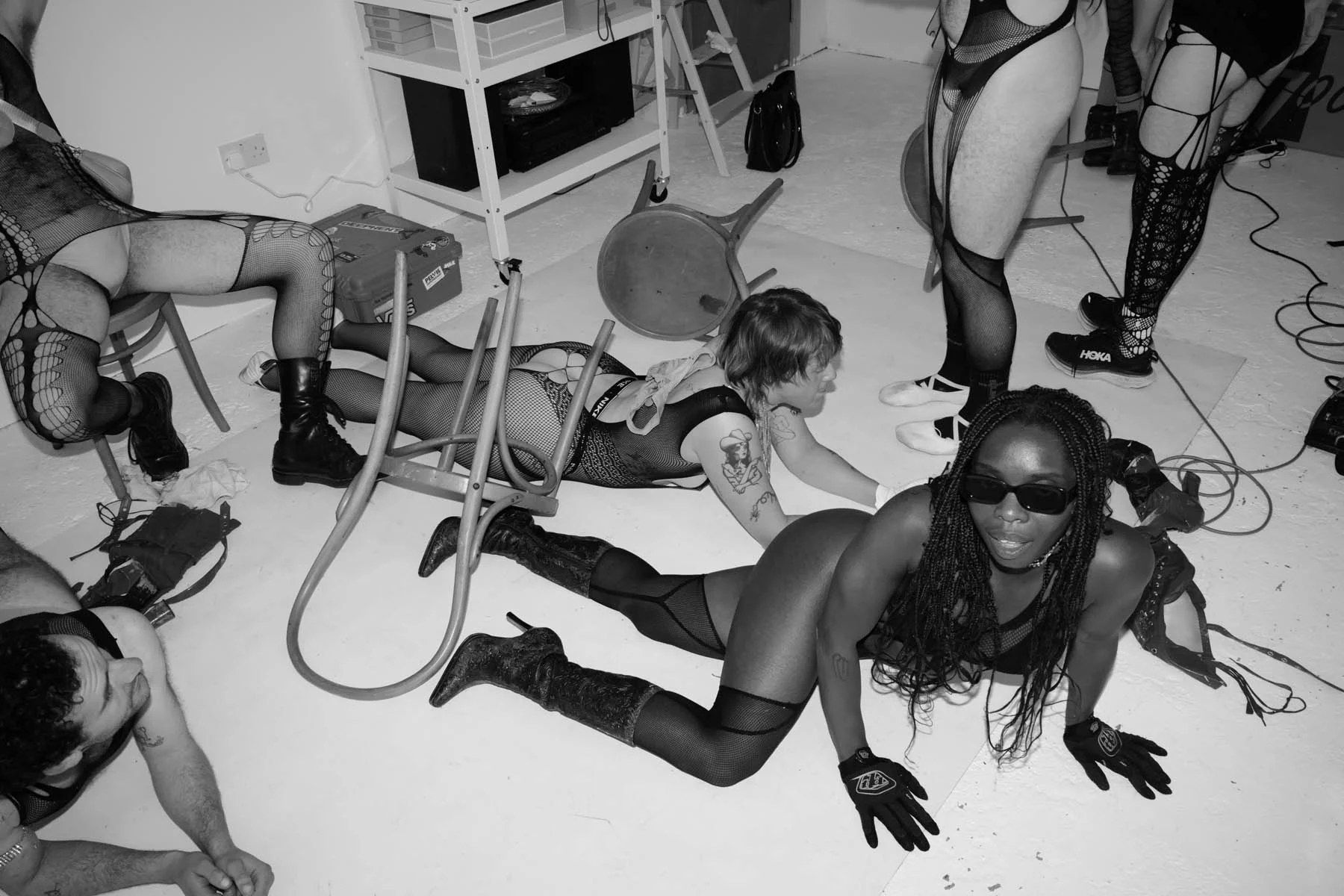

Ted Rogers is a British performance artist and choreographer, whose artistry is entirely devoted to movement. They trained professionally in musical theater, and after moving to London, became entwined with the city’s queer culture; the nightlife, drag, fashion and contemporary dance. In this podcast episode, TalkArt hosts Russell Tovey and Robert Diament speak to Rogers about performance, queerness and their latest exhibition “Vile Diva,” which explored the extremities of movement through a neurodivergent and non-binary lens.
Ted Rogers is one of three artists selected by Russell Tovey as part of his WePresent Guest Curatorship. You can read his mission statement in his Guest Editor's Letter.
On London’s influence, and eventually leaving
Rogers doesn’t shy away from the impact London had on their sense of self. “Before then, I was a suburban kid,” they say. “I had a very tricky time at school. Being gay was extremely difficult and it took me a long time to come out. Then I was also a very homophobic gay for a long time. Then I moved to London and had all these incredible queer transformations. It wasn't until I moved to London and was seen by these club people that I had understood gender as everything, gender as expansive. Understood queerness. It definitely wasn't the understanding that I now have, which by the way is still changing and fluid.”
But London’s charms didn’t last forever for Rogers. “I'm sober and I'm autistic, and London was getting to me. I was working in clubs. I loved working in clubs, but it had become really unsustainable for me. I wasn't able to make it work financially, and sensorially, I was getting really beat down by the noise and the disrespect in the street, and that eternal intensity that London has. So I came down for three days to Margate to stay with Amy Zing, just for a holiday. By the third day, I handed in my notice in London, and that was it. And I think the first three nights I had in Margate, I'd slept better than I had in about 20 years.”
On the decision to focus on their own artistry
Pain’s quite a good driver sometimes. You can only deal with so much pain before you realize that you need to make a change.
Rogers says that Margate liberated them, and led to the decision to stop collaborating with others, instead focusing on being the artist that they were. They’ve since dedicated all their time to this pursuit—including studying at the Open School East during the COVID pandemic—and it’s all led up to their recent solo exhibition, “Vile Diva.”
“I think I was in pain,” Rogers says. “Pain's quite a good driver sometimes. You can only deal with so much of it before you realize that you need to make a change. My whole life, I've felt the need to figure out what I'm making. Now I feel quite driven by this idea of being vulnerable and open to trying new stuff constantly, but it is petrifying. Working as a performer in such high-end moments, everything was so incredible, and the idea of leaving that and starting again and entering that crunchy scrap is horrifying. I think my practice for many years was: get work, go to work, die, recover, get work, go to work. I think I'd be really disappointed in myself if I didn't know that I had exerted my full potential into a project.”
On being neuro queer

On their exhibition “Vile Diva”

On dance culture
On performance


On being queer


